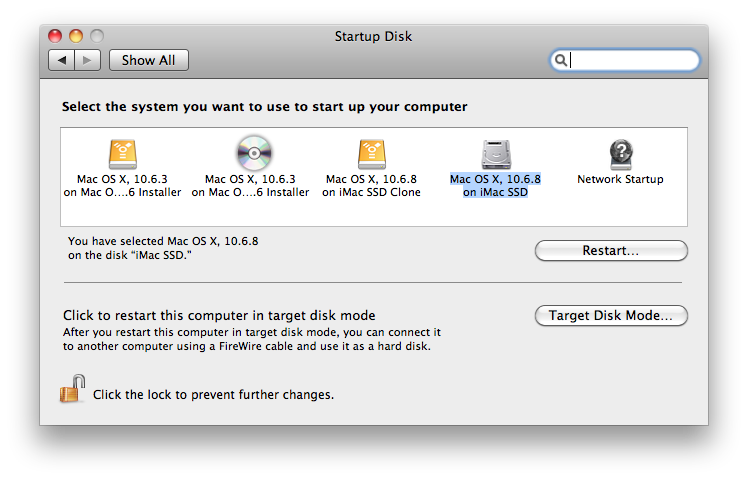Hi all,
Hope you are well.
So I tried using the Disk utility application, and get the following:
I am trying to use the Mac Image I created, but it comes up saying 'To restore the disk image, Disk Utility must scan it first'. I click on 'Scan Disk Image', and it says 'Unable to scan 'Apple HDD' (The HDD I am trying to restore to)'.
Any ideas?
Thanks in advance.
Disk Utility needs to scan the disk image, not the destination drive. You should be able to select the original image on the left hand side and select "Images > Scan image for restore" from the menubar. This scans the original image and allows Disk Utility to later perform a block copy restoration using it as a source.
With that said, will all of your Macs be identical in their software needs? If you anticipate some Macs needing XYZ software and some others needing ABC software then you might look at some technology beyond Disk Utility. Munki & JAMF are both big in enterprise environments, DeployStudio is big in educational environments. These bits of software allow for scripting, post image installation of software, copying of files, etc.
For instance... I'm the Mac admin for a major church and will regularly have to deploy 5 - 10 new Macs every few weeks or so in addition to controlling our current Mac user base of 120~ users. Since help tickets often distract me from setting up new Macs manually I've setup DeployStudio to automate the majority of the process. Just recently I updated my base image using a fresh out of the box 2013 MBAir. Now my workflow is basically:
- Connect new Mac to network
- Netboot to DeployStudio by holding N while powering on (DeployStudio can also run from an external hard drive, bypassing the need for a server)
- Select proper "New Mac" workflow depending on the recipient's department
- DeployStudio restores the base 10.8.4 image (from the 2013 MBAir), sets up post installation files for MS Office, Citrix Receiver, etc and copies over Firefox, Dropbox, etc and configures Active Directory & Open Directory bindings
- Once the workflow is complete the Mac reboots without any interaction from me
- Upon the first boot the Mac will run all of the post installations that DeployStudio set up, these are visible on screen in the form of a log
- Once finished DeployStudio's scripts delete themselves and the process is finished. From start to finish it's about 8~10 minutes.
When Dropbox, Citrix Receiver, Java, etc are updated I can simply toss them into DeployStudio's repo, replacing the older versions, without needing to alter the workflows or build completely new images. You can also use Apple Remote Desktop to push these same updates out to your current Macs.
When I worked in a repair shop I used Disk Utility and sometimes Carbon Copy Cloner to reimage Macs following hard drive replacements but often had to rebuild new images as iLife updates were released and whatnot. Looking back DeployStudio would have saved a load of time.
Just some food for thought for you.
----------
You can repeat as often as you like, but know, you should have the licenses for the many Macs and the apps you clone. Mac OS X 10.7 Lion and OS X 10.8 Mountain Lion once purchased, can be installed on as many OWN Macs as one wants, as far as I remember.
This is partially true. In a business environment Apple's licensing asks that you have a license for each instance of their software. The problem people run into is that you can't repurchase items from the Mac App store using your same Apple ID. Apple instead asks that you purchase separate licenses from them, using either your Apple Rep or calling 1-800-My-Apple, under their volume purchasing program. At home though it seems like the license changes a bit since it's not being used for business purposes, though I've never been able to get a definitive answer on this from an Apple rep.
Don't get me wrong, you can install OS X on however Macs you want since it has no serialization, it's just the licensing terms and moral obligation to watch out for.


